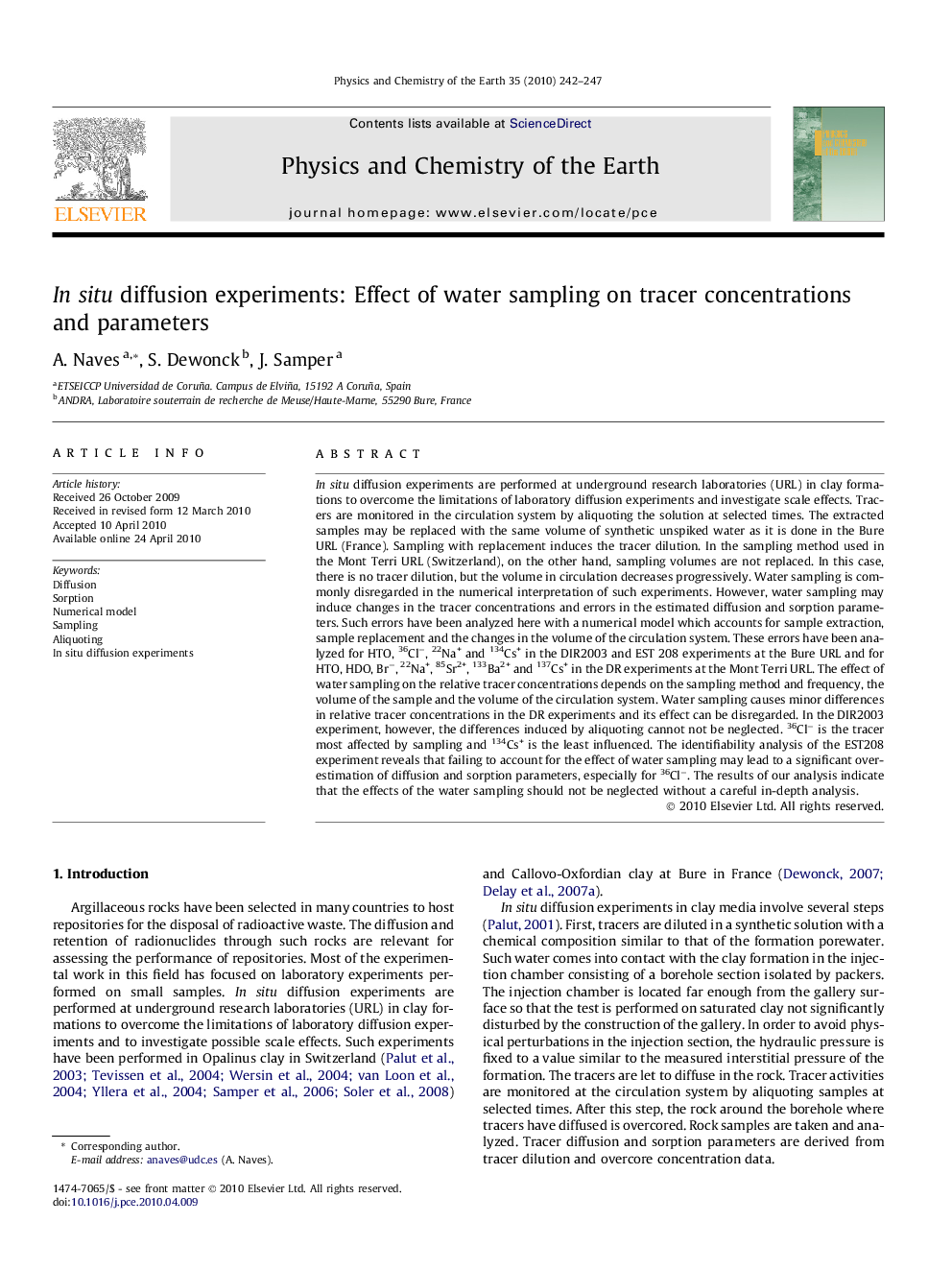| Article ID | Journal | Published Year | Pages | File Type |
|---|---|---|---|---|
| 4722048 | Physics and Chemistry of the Earth, Parts A/B/C | 2010 | 6 Pages |
In situ diffusion experiments are performed at underground research laboratories (URL) in clay formations to overcome the limitations of laboratory diffusion experiments and investigate scale effects. Tracers are monitored in the circulation system by aliquoting the solution at selected times. The extracted samples may be replaced with the same volume of synthetic unspiked water as it is done in the Bure URL (France). Sampling with replacement induces the tracer dilution. In the sampling method used in the Mont Terri URL (Switzerland), on the other hand, sampling volumes are not replaced. In this case, there is no tracer dilution, but the volume in circulation decreases progressively. Water sampling is commonly disregarded in the numerical interpretation of such experiments. However, water sampling may induce changes in the tracer concentrations and errors in the estimated diffusion and sorption parameters. Such errors have been analyzed here with a numerical model which accounts for sample extraction, sample replacement and the changes in the volume of the circulation system. These errors have been analyzed for HTO, 36Cl−, 22Na+ and 134Cs+ in the DIR2003 and EST 208 experiments at the Bure URL and for HTO, HDO, Br−, 22Na+, 85Sr2+, 133Ba2+ and 137Cs+ in the DR experiments at the Mont Terri URL. The effect of water sampling on the relative tracer concentrations depends on the sampling method and frequency, the volume of the sample and the volume of the circulation system. Water sampling causes minor differences in relative tracer concentrations in the DR experiments and its effect can be disregarded. In the DIR2003 experiment, however, the differences induced by aliquoting cannot not be neglected. 36Cl− is the tracer most affected by sampling and 134Cs+ is the least influenced. The identifiability analysis of the EST208 experiment reveals that failing to account for the effect of water sampling may lead to a significant overestimation of diffusion and sorption parameters, especially for 36Cl−. The results of our analysis indicate that the effects of the water sampling should not be neglected without a careful in-depth analysis.
